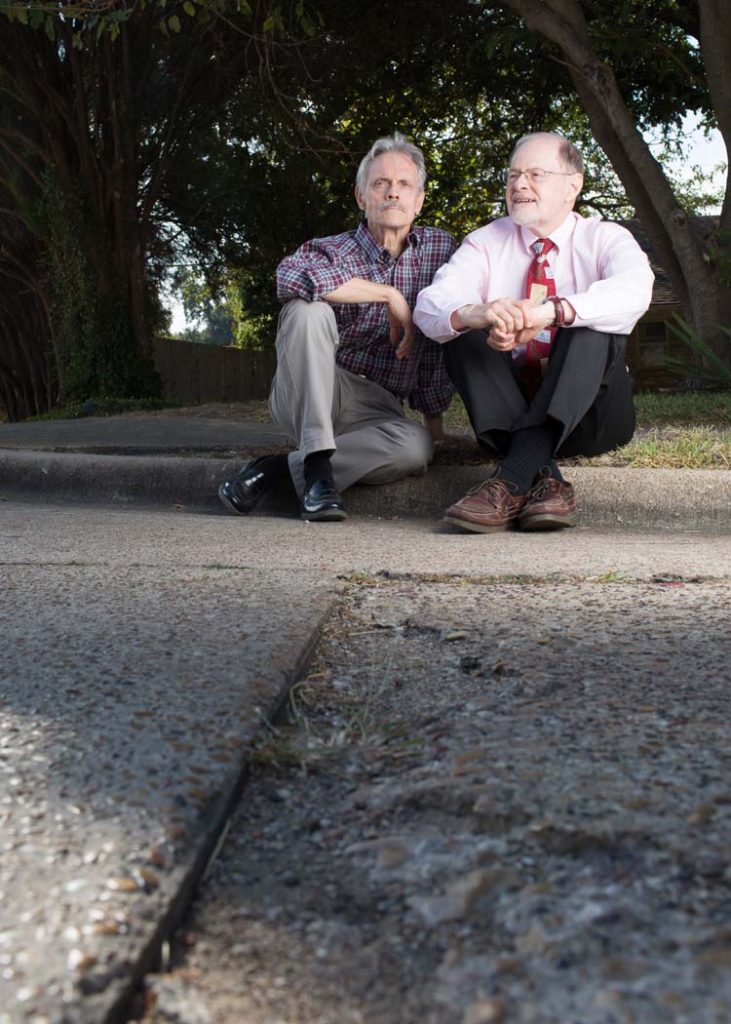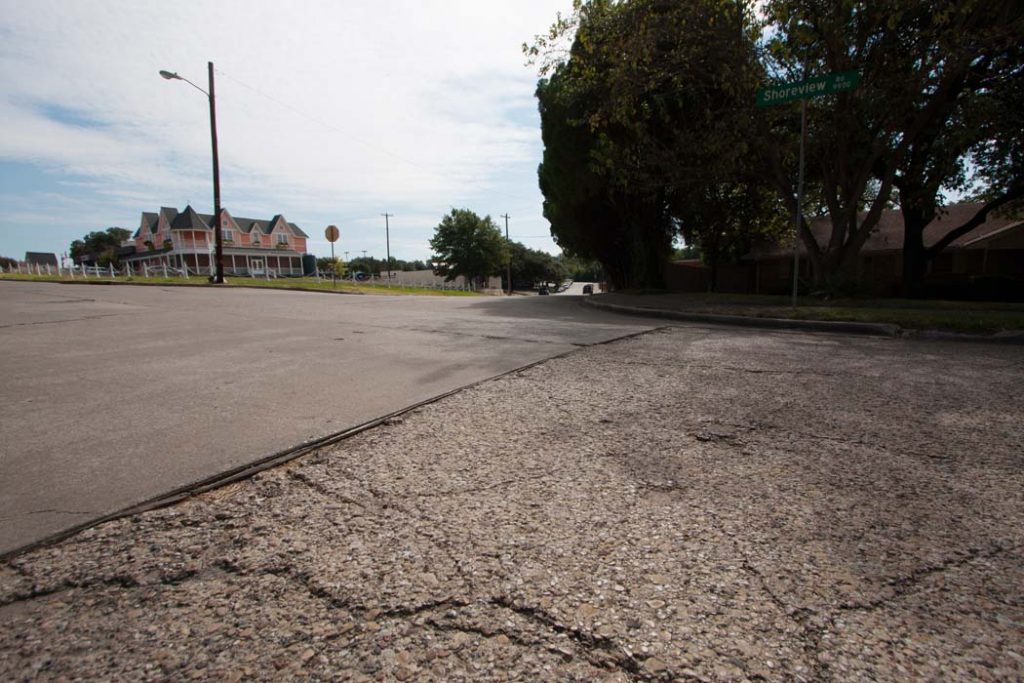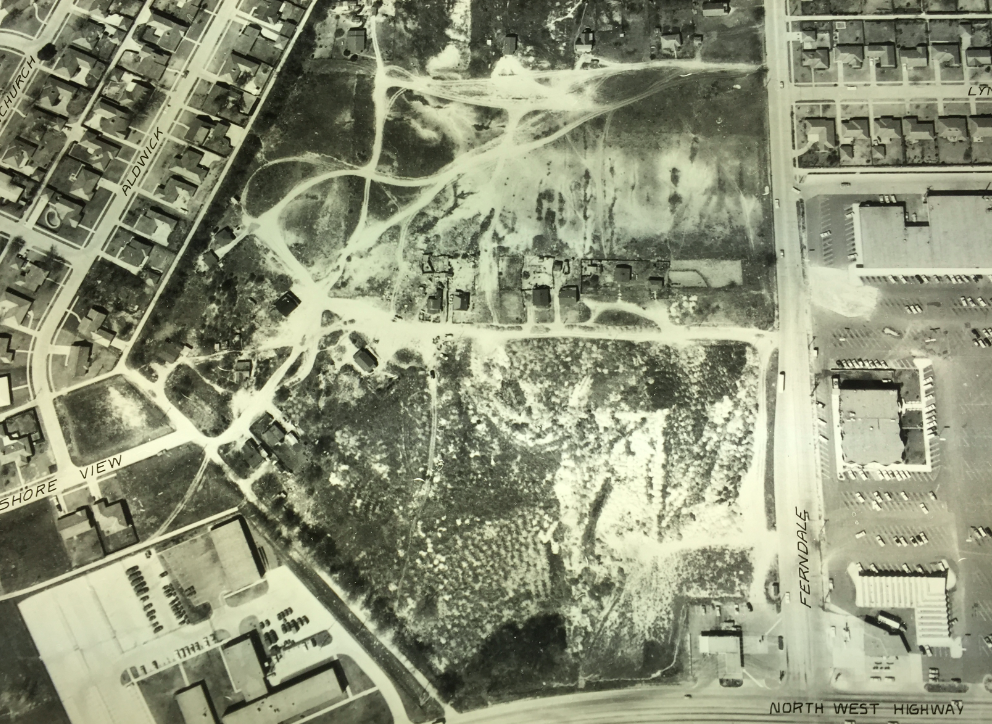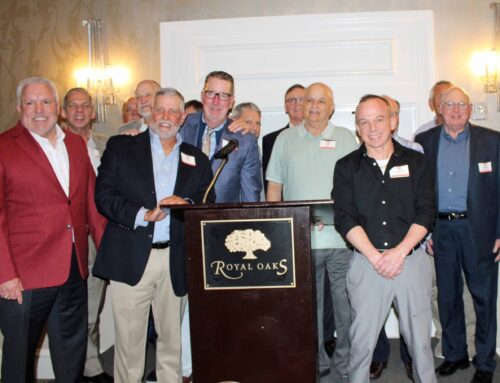
2015: Richland College anthropology professor Tim Sullivan, and history professor Clive Siegle at Shoreview Road- Thurgood Lane intersection. Photo by Rasy Ran
Even as upper middle class subdivisions sprouted up around it in 1961, the post-Civil War black community known as Little Egypt persisted, atop dirt roads and without running water or sewage systems.
“Look at this. It is astonishing,” Richland College professor Clive Siegle told us when we spoke to him for a story last year, pointing to a map depicting a bird’s eye view of the Little Egypt area as it looked 55 years ago.
“There are brand new homes, with all the modern conveniences, going in all around. A new shopping center, restaurants, service stations. And here you can see the Egyptians are still using outhouses. Imagine, going out there at night, in the winter. It had to be far enough from the house … well, and they probably had to move them from time to time because the pits would fill up …”
Sure enough, close inspection shows a straight path leading from a house to a tiny structure that can only be its outdoor toilet.
There are important lessons to be learned by studying local history, and Little Egypt is a fascinating case, Siegle explained at the time, which was why he and his honors history class, in collaboration with an honors anthropology class taught by professor Tim Sullivan, embarked on a long journey to unearth more about Little Egypt.
At the time of our story, the professors and students were researching, seeking out Little Egypt’s residents and ancestors, interviewing them—our story even drew emails from a few people who were around at the time (we promptly connected them with the professors, as they had requested).
Neighborhood resident and Dallas Morning News columnist James Ragland caught up with the Richland College educators and students this week, and he found that they actually are digging now, on the site where one Little Egypt farm stood, for artifacts.
That site is located right near where we took there photo last year. We chose the place where Siegle says he formulated the whole idea.
Curiosity was piqued when Siegle, out for a walk, noticed that the concrete and surrounding terrain on his street changed dramatically from one spot to another.
“I asked my neighbor, who actually lived here in the ‘60s, about it, and he’s the one who told me about Little Egypt which he remembers from when he was a teenager. He told me about the fact that right next to his neighborhood of $40,000 homes (pricey in the ‘60s) was this neighborhood of houses with no running water … the change in the pavement is the spot where the dirt roads of Little Egypt began,” Siegle told us. “And I thought, ‘You have to be joking!’ I just couldn’t believe it.”

Richland College history professor Clive Siegle, a Lake Highlands resident, initially began his foray into Little Egypt when he inquired a neighbor of why Shoreview Road featured two distinct build decades. Photo by Rasy Ran
Along that same street is an empty lot. It’s located at Shoreview, right beside the Eastlake Cat Hospital, which owns the property. At one time Eastlake proprietors promised a catnip garden (no, seriously) to go with the cat hospital, and I imagined this is where it would be, but for now it’s an empty lot where Siegle tells Ragland he and his crew will visit “as often as they let us.”
As of Friday, reports Ragland, the historians and archeologists had not found what they were looking for. He also includes some historical photos from Little Egypt that we had not seen. See his piece here.






